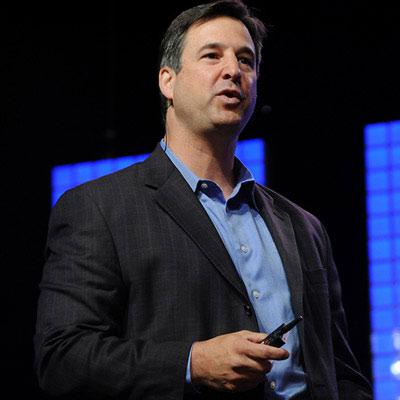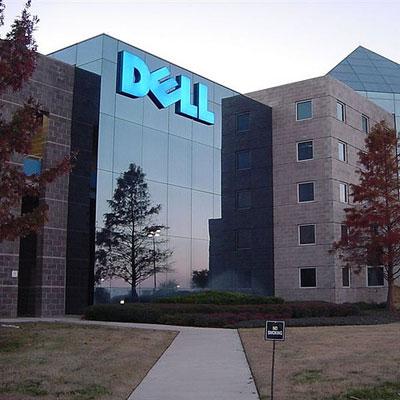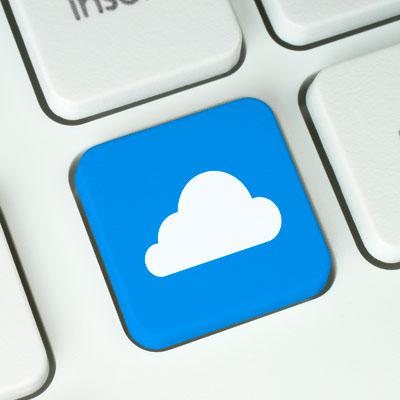Dell's Marius Haas Q&A: Channel Revenue Up, But Challenges Persist

On The Record
What's the health of Dell's channel post Dell going private? How are the logistics of handing over 200,000 direct accounts into the hands of partners going? What is Dell's cloud strategy? What are Dell partner's biggest new opportunities in the market?
At its Dell User Forum in Hollywood, Fla., Marius Haas, Dell's chief commercial officer and president of enterprise solutions, sat down with CRN to talk channel. During the conversation, Haas touched on myriad topics including the company's just-unveiled workload-specific data-center-in-a-box offerings.

How is Dell progressing in its efforts to move more direct accounts into the channel?
Clearly there is work to be done on accelerating the whole training, enablement, territory mapping and account mapping. Things are starting to move into high gear. The changes we have made internally are now enabling the regional sales directors to have much more collaborative conversations with the partners without having to defend a sales territory. Progress is being made between channel and indirect sales when it comes to clarity around incremental lines of business in existing Dell accounts and how those lines of businesses get treated and how compensation works.

How many accounts have been brought to the channel?
I think it's less about the number of accounts. It's about promoting a cultural transformation around working with the channel to ensure that Dell products and solutions are best represented to the customer community. Ultimately, we could bring 200,000 accounts or more. We don't want to get hung up on the number. It's not the number that matters. It's making sure Dell and its partners are addressing the total opportunity in the marketplace. And, yes, it's about sales teams and partners working together to drive that.

What have you learned when it comes to rolling out direct accounts to the channel?
The nice part of what's happening is it's all surfacing -- the good and bad -- and that allows us to have the opportunity to get our arms around what are the inhibitors. In the past when you had the two separate [channel and direct] organizations, that conversation wasn't happening in a fruitful way. On a global basis, deal registration volumes are going through the roof. That is a great testament to our partners really embracing this channel model. But we still have things we need to do.

What work is there to be done when it comes to rolling out more direct accounts to the channel?
We still have finite details to work through to get that engagement model at the territory level humming at a much higher velocity. There are still some toolsets that Dell needs to improve on in terms of turning around partner requests for service-level agreements and turning around configuration quotations. Partners are asking for us to get better on that front.
I want partners to know I understand and hear what they are saying. Even though we are growing at exponential rates, we have work to do. We can grow even faster by improving on issues that are surfacing. It's key that the partner community knows that I know we can do better. I know we can do better. But at the same time we are excited about the progress we have made already.

Just before Dell restructured its direct and indirect sales Michael Dell said the channel represented about 33 percent of Dell's revenue. Have you moved the needle?
Today in North America, 37 percent of Dell's revenue is going through the channel. Globally, in our top 10 markets around the world the amount of business through the channel varies between [23 percent and 70 percent].
To be clear, there isn't a mandate to achieve 40 [percent], 51 [percent] or 60 percent channel-driven revenues. The only number we care about is 100 percent market coverage. Our goal is to have a well-managed coverage model. If it ends up that dictates a majority of our business goes through the channel, we are fine with that.
What we don't want to do is oversaturate the market with too many partners.

What do you point to illustrating and documenting Dell's channel success?
The No. 1 indicator of success is a 24 percent channel revenue growth compared to last quarter. That's a pretty compelling data point. It illustrates the point -- things are going well.

Regarding Dell's strategy for moving direct accounts to the channel, some smaller partners say they are being left out and some larger VARs say Dell is giving preferential treatment to VARs that pass a ’beauty contest.'
What we see is Dell's LARs and fastest-growing partners being the ones that have been the most aggressive about engaging with us. They are the most tenacious about finding opportunities and coming to us and asking to do the territory and account mapping. Those are the partners with the machinery in place to do that. So, yes, they are getting a bigger share of the incremental growth.
It comes down to territories and opportunities. When it comes to bringing partners into existing accounts and trying to crack open new business, we have to ask ourselves which partners have the right profile for a specific account and that can drive new and existing business. It's not rocket science. We need to best marry partners with the opportunity.

What can partners who feel left out do to get more involved?
My comment to the VAR community is, we are moving aggressively forward and we need you to also move aggressively forward. It's when both of us put efforts into the mix that you see exponential return.
You can't just sit there and wait for a silver platter to come to you. Partners need to proactively seek out who their territory partners are from Dell. They need to push hard and work aggressively with them. For us, we are always going to gravitate to the folks that are most aggressively wanting to engage with us.

Has Dell overpromised what it can deliver in terms of bringing big accounts to the channel and being able to get this program off the ground fast?
This goes back to my earlier comment that authentic discussions are happening between us and our partners. Those conversations are around enabling us to keep honing and refining our approach to make sure we are as efficient and as effective as possible for the partners and customers.
As I previously said, I think it's less about the number of accounts we have moved to the channel and more about Dell changing its DNA and what's to come.

What have you learned since the rollout?
When we were segregated between direct and indirect sales our direct sales team hadn't fully contemplated what working within the partner ecosystem would be like. Those regional Dell sales directors now realize aligning resources with channel partners can get them more at-bat opportunities with customers.
That has led to a natural realignment of our sales organization toward more of a territory coverage model instead of an account model. So now the question becomes, ’How do I cover 100 percent of a territory with an omni-channel strategy?' We are still learning. We are starting to get some authentic feedback from the partners to say, ’Hey, this works and this doesn't work.'
We need to go faster on partner training on how to work with Dell direct sales putting together complex sales solutions. Typically, complex solutions are important and large accounts have a multitude of opportunities. We know there is work to be done there.

Can you talk about Dell's appliance approach to IT that you kicked off here at Dell User Forum?
Dell customers are increasingly telling us they are trying to deploy a specific workload and looking for Dell or a partner to give them the whole solution in the most simplified manner. They want it all. They want the best TCO [total cost of ownership] possible in the industry and standard x86 architecture for maximum integration opportunities. That's the niche appliances fill.
Dell has simplified the customer experience with appliances [and] at the same time [is delivering] a no-compromise experience. To build these appliances, Dell has partnered with key ISVs to engineer the types of solutions customers are looking for. So now we can deliver to our customers a solution that is fully integrated and based on a common compute architecture. Dell pulls it off with converged appliances with great performance, which are easy to manage and priced extremely competitively.
We'll continue to drive this appliance approach.

Talk about how appliances will help partners grow their business.
It simplifies a partner's engagement model with customers [and] at the same time allows them to sell their own service and support, hardware and software. Appliances enable our partners to up their game and be more of an end-to-end solutions provider. This allows them to provide a workload with an integrated solution. They can provide services, implementation services, management services on top of what is a very nice engineered architecture.

One of the knocks on Dell is a perception Dell has no cloud strategy. Can you clear the air and outline what exactly is Dell's cloud strategy?
This is a fascinating study. I guess you need to send out a press release that says you are investing a billion-dollars-plus in the cloud in order to be perceived as a cloud player? That's a farce. We try not to waste our customers' time by playing the PR game that way. We have this conversation with analysts and their solution is: ’Why don't you do a press release like everyone else?' We try not to waste people's time.
Truth be told, Dell today is the industry leader in providing cloud infrastructure -- especially in the compute side for all the largest Web tech players.

What are Dell customers asking for when it comes to cloud?
Our customers are traditional IT shops that tell us they want to start with a private cloud instance either on-prem or off-prem. They tell us before jumping onto the public cloud they really want to understand how does the application behave, how do I manage security, how do I manage data flow, and how do I better understand the SLAs associated with every different workload they want to do. They want to be able to understand the ROI and the risks associated with taking a certain application or workload to a public cloud environment.
For the most part, Dell customers have either on-prem or off-prem hosted private cloud solutions. Dell and partners are helping customers with that type of cloud solution day-in and day-out. We are doing it with Azure and Red Hat OpenStack. Go ask Red Hat yourself who is their preferred infrastructure partner. They will tell you it's Dell.

As public cloud adoption grows among Dell customers, how does Dell adapt?
We also have this capability to do multicloud management. We bought a company called Enstratius that does enterprise cloud management. So when a customer says, ’Hey, I want to do a multicloud environment on-prem or off-prem,' Dell can deliver that solution.
Dell can do that off-prem and on-prem and bursting into public cloud environments. We have made arrangements with all the large public cloud service providers -- you name them, we've got them. We are going to offer a seamless experience that is an all-Dell experience.
Instead of making an announcement, ’Dell is going to spending a billion dollars competing with its customers,' we would much rather enable our customers by providing them access to our customers that have private and public cloud solutions.

What is Dell's investment in research and development?
Our spending on research and development goes back to why we wanted to take the company private. Dell is focused on innovation and research and development. There is tremendous focus on increasing our focus on innovation. The data point on R&D at Dell is we went from spending 1.6 percent of revenue on R&D as a public company to 2.1 percent today.